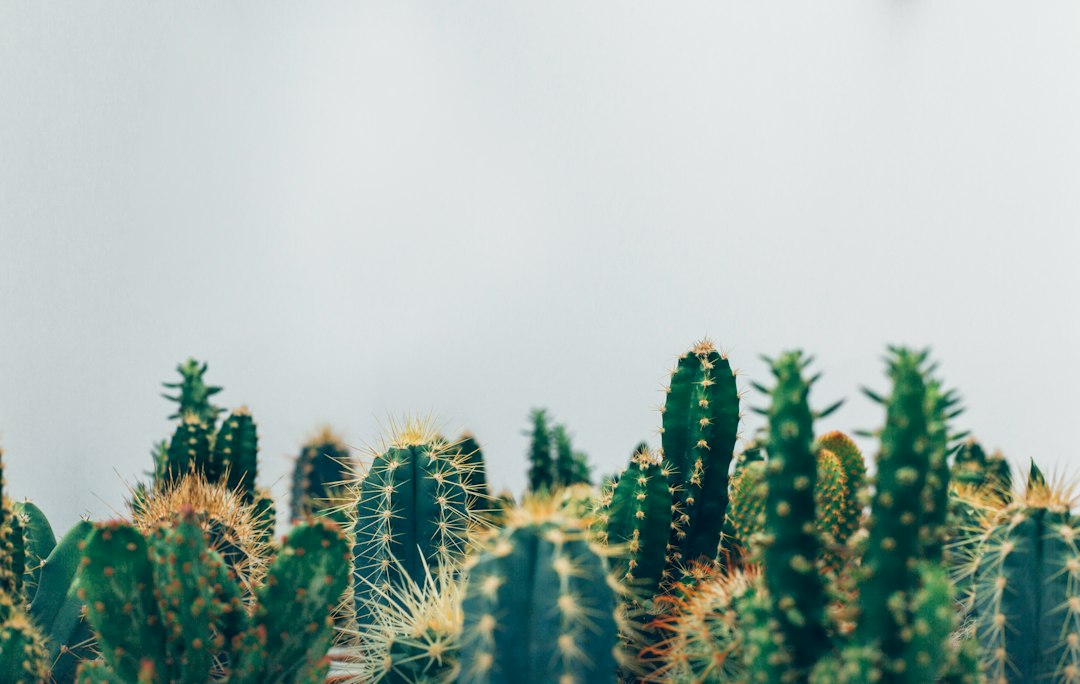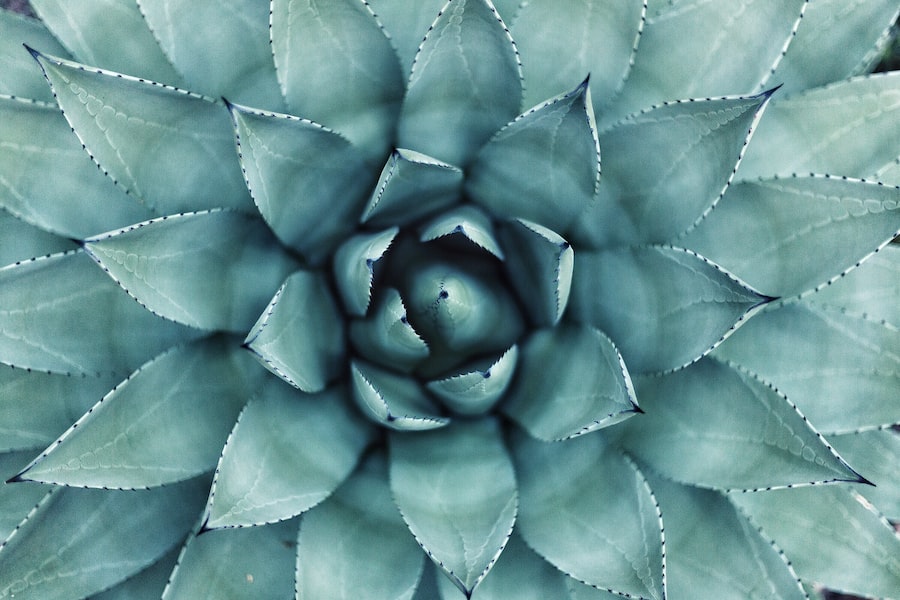From Seed to Succulent: A Beginner’s Guide to Growing Cacti

Cacti have become increasingly popular in recent years, with their unique and striking appearance making them a favorite among plant enthusiasts. These desert plants are known for their ability to thrive in harsh conditions, making them a low-maintenance option for those looking to add some greenery to their space. However, despite their reputation for being easy to care for, it is important to understand the basics of cacti care in order to ensure their health and longevity.
Key Takeaways
- Cacti are low-maintenance plants that can thrive in a variety of environments.
- When selecting a cactus, consider factors such as size, shape, and lighting needs.
- Proper soil preparation is crucial for successful cactus growth, including using well-draining soil and adding perlite or sand.
- When planting cactus seeds, be patient and provide consistent moisture and warmth.
- Propagating cacti can be done through cuttings or offsets, and requires careful handling and attention to detail.
Selecting the Right Cactus for Your Space
When choosing a cactus, there are several factors to consider. First and foremost, you need to assess the amount of space you have available. Some cacti can grow quite large, while others remain small and compact. It is important to choose a cactus that will fit well in your space and not become overcrowded.
Additionally, different types of cacti have different characteristics. Some have long spines, while others have short or no spines at all. Some cacti produce vibrant flowers, while others remain relatively plain. Consider what features you are looking for in a cactus and choose accordingly.
Finally, it is important to match the cactus to your environment. Cacti are native to desert regions and thrive in dry, arid conditions. If you live in a humid climate or have a tendency to overwater your plants, you may need to choose a cactus that is more tolerant of these conditions.
Preparing the Soil for Successful Cactus Growth
One of the most important aspects of cacti care is ensuring that they are planted in well-draining soil. Cacti are adapted to survive in desert conditions where water is scarce, so they are not accustomed to sitting in wet soil for extended periods of time. If the soil does not drain properly, the roots can become waterlogged and rot.
To create the ideal soil mix for cacti, you can start with a commercial cactus mix or make your own. A good cactus mix should consist of a combination of well-draining materials such as perlite, pumice, and coarse sand. These materials help to create air pockets in the soil, allowing excess water to drain away from the roots.
When repotting cacti, it is important to handle them with care to avoid injury. Use gloves or a folded towel to protect your hands from the spines, and gently remove the cactus from its current pot. Be sure to use a pot with drainage holes to prevent water from pooling at the bottom.
Planting Cactus Seeds: Tips and Tricks
| Tip/Trick | Description |
|---|---|
| Soil | Use well-draining soil with sand and perlite for best results. |
| Watering | Water sparingly, only when the soil is completely dry. |
| Light | Place the seeds in a bright, sunny location for optimal growth. |
| Temperature | Keep the seeds in a warm location, ideally between 70-80°F. |
| Germination | Seeds can take anywhere from 1-6 weeks to germinate. |
| Transplanting | Wait until the seedlings have at least two sets of true leaves before transplanting. |
| Fertilizer | Use a low-nitrogen fertilizer once a month during the growing season. |
If you are interested in starting your cactus collection from seeds, there are a few steps you can follow to increase your chances of success. First, choose a high-quality seed mix specifically designed for cacti. This will ensure that the seeds have been properly treated and are ready for germination.
Next, prepare a small pot with well-draining soil and moisten it slightly. Sprinkle the seeds evenly over the surface of the soil and cover them lightly with a thin layer of sand or vermiculite. Place the pot in a warm, sunny location and keep the soil consistently moist until germination occurs.
It is important to note that cactus seeds can take several weeks or even months to germinate, so patience is key. Once the seedlings have emerged, gradually reduce watering to allow the soil to dry out between waterings. This will help promote strong root growth and prevent rot.
Propagating Cacti: How to Multiply Your Collection
Propagating cacti is a great way to expand your collection without having to purchase new plants. There are several methods of propagation that can be used, including stem cuttings, offsets, and grafting.
Stem cuttings involve taking a piece of the cactus stem and allowing it to dry out for a few days before planting it in well-draining soil. This method works best with larger cacti that have woody stems.
Offsets, also known as pups or babies, are small offshoots that grow from the base of the parent plant. These can be carefully separated from the parent and planted in their own pots. It is important to wait until the offsets are large enough to handle before attempting to separate them.
Grafting is a more advanced method of propagation that involves joining two different cacti together. This is typically done to combine the desirable traits of one cactus with the hardiness of another. Grafting should only be attempted by experienced gardeners.
Watering and Fertilizing Cacti: Best Practices

Watering cacti can be a bit tricky, as they have specific water requirements that differ from other houseplants. In general, cacti prefer to be watered infrequently but deeply. This means allowing the soil to dry out completely between waterings and then thoroughly saturating it when you do water.
It is important to avoid overwatering cacti, as this can lead to root rot and other issues. To determine when your cactus needs water, you can use the “finger test.” Stick your finger about an inch into the soil – if it feels dry, it is time to water.
When it comes to fertilizing cacti, less is more. Cacti are adapted to survive in nutrient-poor soils, so they do not require frequent fertilization. A slow-release fertilizer specifically formulated for cacti can be applied once or twice a year during the growing season.
Providing the Ideal Light and Temperature for Cacti
Cacti thrive in bright, indirect light, so it is important to place them in a location where they will receive plenty of sunlight. A south-facing window is usually the best option, as it provides the most consistent light throughout the day.
However, it is important to protect cacti from extreme temperatures, as they can be sensitive to both hot and cold conditions. In the summer, it is best to keep cacti out of direct sunlight during the hottest part of the day to prevent sunburn. In the winter, it is important to keep them away from drafty windows and heating vents.
Different types of cacti have different light and temperature requirements, so it is important to research the specific needs of your plants. Some cacti prefer bright, indirect light, while others can tolerate more shade. Similarly, some cacti are more cold-hardy than others and can withstand lower temperatures.
Preventing and Treating Common Cactus Pests and Diseases
While cacti are generally hardy plants, they can still be susceptible to pests and diseases. Some common pests that affect cacti include mealybugs, scale insects, and spider mites. These pests can cause damage to the plant by sucking sap from the stems and leaves.
To prevent infestations, it is important to regularly inspect your cacti for signs of pests. If you do notice any pests, you can try removing them manually with a cotton swab dipped in rubbing alcohol. For more severe infestations, you may need to use an insecticidal soap or neem oil.
In terms of diseases, root rot is one of the most common issues that affect cacti. This occurs when the roots become waterlogged and start to rot. To prevent root rot, it is important to ensure that your cactus is planted in well-draining soil and that you are not overwatering.
Pruning and Shaping Cacti: Maintaining Healthy Growth
Pruning cacti is not always necessary, but it can help to maintain the health and appearance of the plant. Pruning can be done to remove dead or damaged growth, promote branching, or shape the cactus.
When pruning cacti, it is important to use clean, sharp tools to avoid damaging the plant. Sterilize your tools with rubbing alcohol before and after each use to prevent the spread of disease. Make clean cuts just above a node or joint to encourage new growth.
Different types of cacti require different pruning techniques. Some cacti, such as columnar cacti, can be pruned to create a more compact shape. Others, such as trailing cacti, can be pruned to encourage branching and create a fuller appearance.
Displaying Your Cactus Collection: Creative Ideas and Inspiration
Once you have mastered the art of caring for cacti, it is time to show off your collection. There are countless ways to display cacti both indoors and outdoors, depending on your personal style and space constraints.
Indoors, you can create a mini desert garden by grouping several cacti together in a decorative tray or terrarium. You can also place individual cacti in unique containers such as teacups or mason jars for a more eclectic look.
Outdoors, you can create a stunning display by planting cacti in a rock garden or raised bed. You can also incorporate them into existing landscaping by placing them in between rocks or using them as focal points in flower beds.
When displaying your cactus collection, it is important to consider their light and temperature requirements. Be sure to place them in a location where they will receive the appropriate amount of sunlight and protection from extreme temperatures.
Caring for cacti can be a rewarding and enjoyable hobby. By understanding the basics of cacti care, you can ensure that your plants thrive and continue to bring beauty to your space. From selecting the right cactus for your environment to providing the ideal light and temperature, each step is important in creating a healthy and vibrant cactus collection. So go ahead, start or continue caring for cacti and enjoy the unique beauty they bring to your home or garden.



